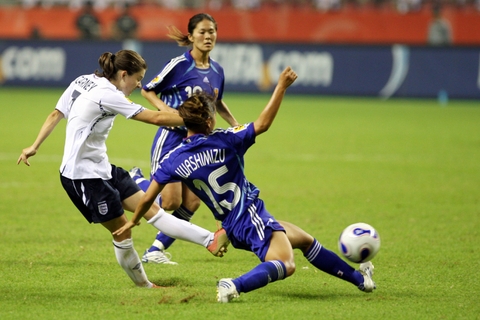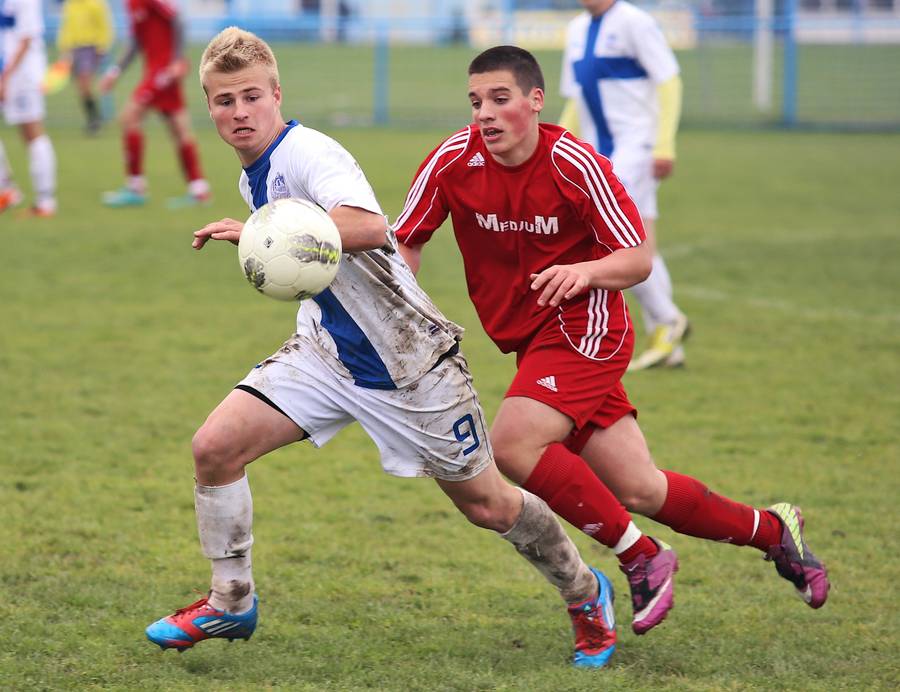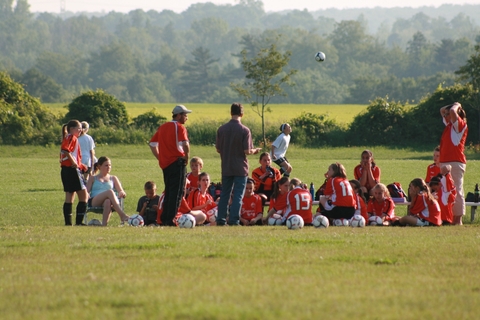
Standing on the touchline of a rain lashed pitch first thing on a Sunday morning is probably about as British as it gets but how many games have you been to where the players are not just battling against the opposition team but battling the elements too?
Between the waterlogged fields of Autumn and Winter to the occasional scorching heat of the early and late season, weather conditions can be the great equaliser in grassroots football, affecting everyone from the Under-7s playing their first matches to veterans of the game. While pro players at the top level enjoy the luxury of pristine pitches, those of us in the grassroots game have to learn to adapt, improvise and overcome whatever Mother Nature throws our way.
Having coached grassroots teams for as long as I have, I've experienced first hand how different weather conditions can transform the game. These aren't merely inconveniences to be endured but challenges that require specific tactical, technical and practical responses. Recognising this reality and preparing accordingly can be the difference between development and frustration and even between safety and injury.
Heavy and persistent rain is perhaps the most common weather challenge we face in British grassroots football. Beyond the obvious discomfort, rainfall fundamentally alters the playing surface and the behaviour of the ball. A pitch that might have played true in dry conditions suddenly becomes an unpredictable quagmire, with the ball holding up in puddles or skidding off the surface at high pace. Players who looked comfortable in possession a week earlier suddenly struggle with their first touch. Passes that would normally reach their target now stop dead in waterlogged areas.
The technical demands in wet conditions require specific adaptations. First touches need more cushioning as the ball arrives with greater pace on slick surfaces. Passing requires firmer contact and may even need to be lifted in to avoid getting stuck in heavy areas. Clean strikes can become more difficult and games in these conditions look very different.
Tactically, wet conditions often favour simplicity. Playing through the thirds that worked so well on a dry September morning might be suicidal on a near waterlogged February pitch. Teams that adapt by playing more direct and focusing on territorial advantage often fare better. This might not sit well with everyone’s principles but sometimes it’s a case of doing what’s best in the circumstances.
Which isn’t to say we should abandon our principles entirely, but modify them intelligently to suit the conditions.
Cold weather presents its own distinct set of challenges too. Many grassroots coaches underestimate the physiological impact of low temperatures on performance. Sports science research clearly shows that cold muscles are tight muscles, and tight muscles are vulnerable to injury. Reaction times slow, explosive power decreases and decision making can become impaired when body temperature drops significantly. Adapting to cold conditions begins with proper preparation. The days of static stretching in freezing conditions should be consigned to history.
Instead, it’s important that warm ups are progressive, dynamic and thorough, even beginning indoors if at all possible before moving outside. Players should be active from the moment they arrive at the training ground or match venue, with coaches minimising standing around time during explanations.
Kit choices become crucial in cold weather. Base layers, gloves, hats during warm ups or even to play in, and of course appropriate footwear, are necessities for performance and safety. For younger
players especially, whose bodies struggle more with temperature regulation, these considerations are essential.
Training Session design needs careful thought in cold conditions. Activities should maintain high involvement rates, standing in queues for turns or listening to lengthy coaching points causes body temperature to drop rapidly. Rotation becomes important, ensuring no player is left inactive for extended periods, particularly in positions like goalkeeper where movement may be more limited.
At the opposite end of the spectrum, hot weather brings different challenges that are becoming increasingly relevant with our changing climate. Heat stress doesn't just affect comfort, it fundamentally alters physiological responses to exercise. Players' decision making decreases as core temperature rises, while physical performance markers like high intensity running distance drop significantly.
Adapting to heat requires both preparation and in-session management. Hydration becomes absolutely critical, with research showing that even mild dehydration significantly impairs football specific skills. Practically, this means scheduled drink breaks, easily accessible water bottles and coaches who actively encourage regular fluid intake. Scheduling also matters, whenever possible, training sessions and matches should avoid the hottest parts of the day, with early mornings or evenings being preferable.
Session design in hot conditions needs to account for increased physiological strain. Work periods may need to be shorter, with more frequent rest intervals. Technical focus may need to take precedence over high intensity physical work. Recovery time between activities should increase and coaches should be vigilant for signs of heat stress, particularly among younger players who may not recognise their own limits.
Although I’ve yet to experience a game cancelled for high winds, for me it is the worst of all the weather conditions with the way it directly affects the game itself and the additional chilling affect it has on the temperature. High wind probably represents the most tactically complex weather condition to address. Unlike rain or temperature, wind creates a one sided advantage that can shift throughout the match. Playing against strong wind can make playing forwards virtually impossible, while playing with it can send quite normal passes sailing beyond their targets. Crossing, shooting and even goal kicks are all dramatically affected.
The tactical approach to windy conditions requires genuine game intelligence. When playing against strong wind, keeping the ball on the ground and playing through the thirds becomes essential. Build up play needs to be shorter and more patient, with defenders stepping out rather than clearing long.
When playing with the wind, teams can exploit the conditions by encouraging shots from distance, early crosses and pressing high to capitalise on opponents' difficulties in playing forward.
In addition to these physical and tactical impacts, weather conditions can have a significant psychological dimensions. The most successful grassroots players and teams develop resilience to adverse conditions rather than seeing them as excuses. Coaches play a crucial role in framing weather challenges positively, as opportunities to demonstrate adaptability rather than as obstacles to "proper" football.
This mindset shift is particularly important in youth development. Players who learn to embrace different and sometimes difficult conditions develop greater mental toughness. Simple changes in language can help such as referring to ‘these conditions’ rather than ‘despite the weather’ subtly transforms perception and removes the temptation to use the conditions as an excuse.
For individual players, personal preparation matters too. Having appropriate footwear options for different conditions, carrying spare kit for unexpected weather changes and developing a good pre match routine all contribute to consistent performance regardless of the conditions.
At the heart of it all, adapting to the weather in grassroots football is about maintaining the balance between development and enjoyment. No player ever improved by being cold, bored or unsafe.
Equally, no team reaches its potential without facing and overcoming adversity. British weather may be unpredictable, but it offers valuable learning opportunities for those prepared to embrace them.
Coaches who understand the effects of the environment and respond with flexibility, creativity and empathy help their players to thrive, regardless of what the forecast might say.
Football, after all, is not meant to be sterile or predictable. It is a game of improvisation and moments shaped by circumstances as much as individual skills. Grassroots football is often played far away from the pristine conditions of professional academies probably captures this truth better than any other level of the game.


















